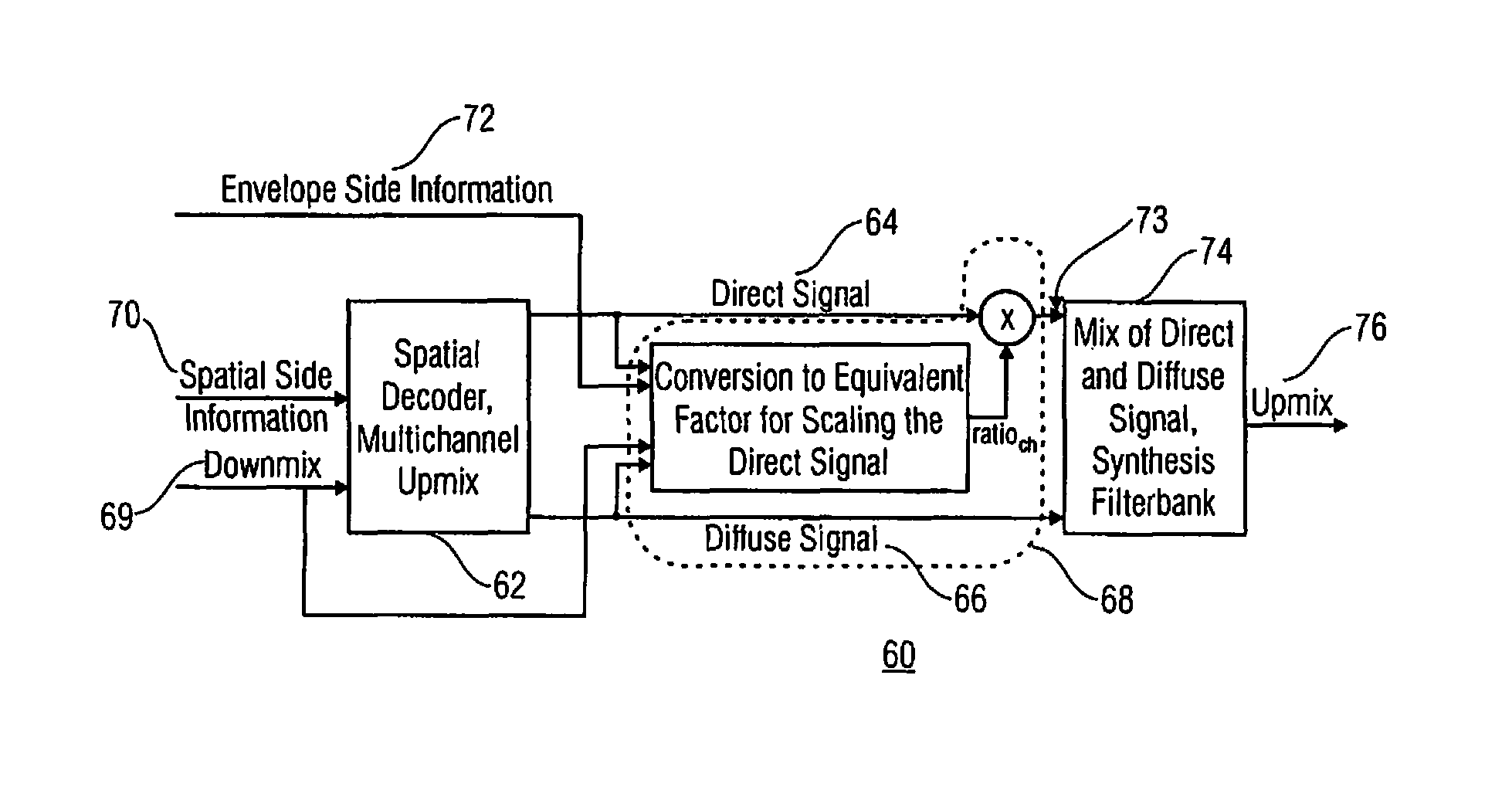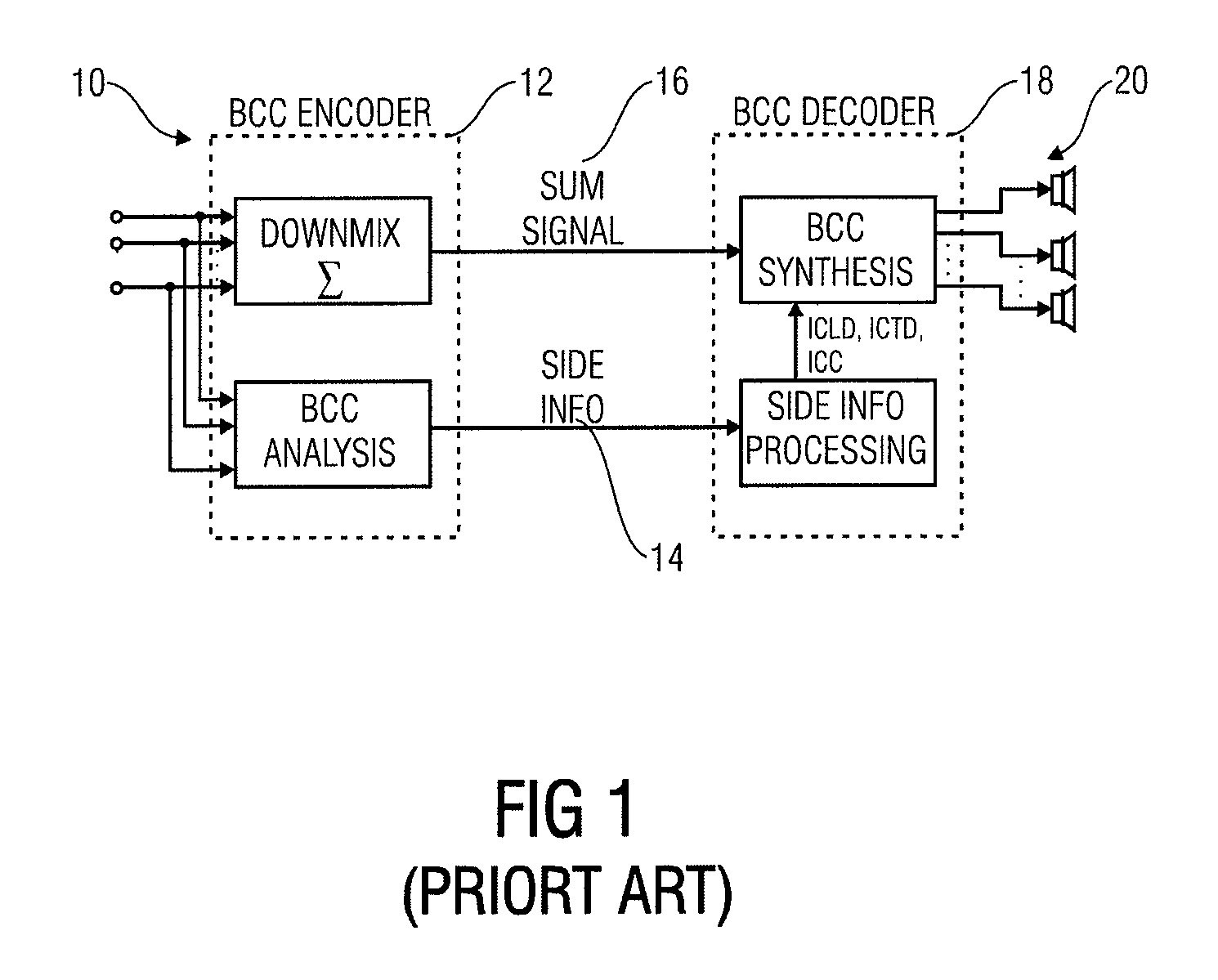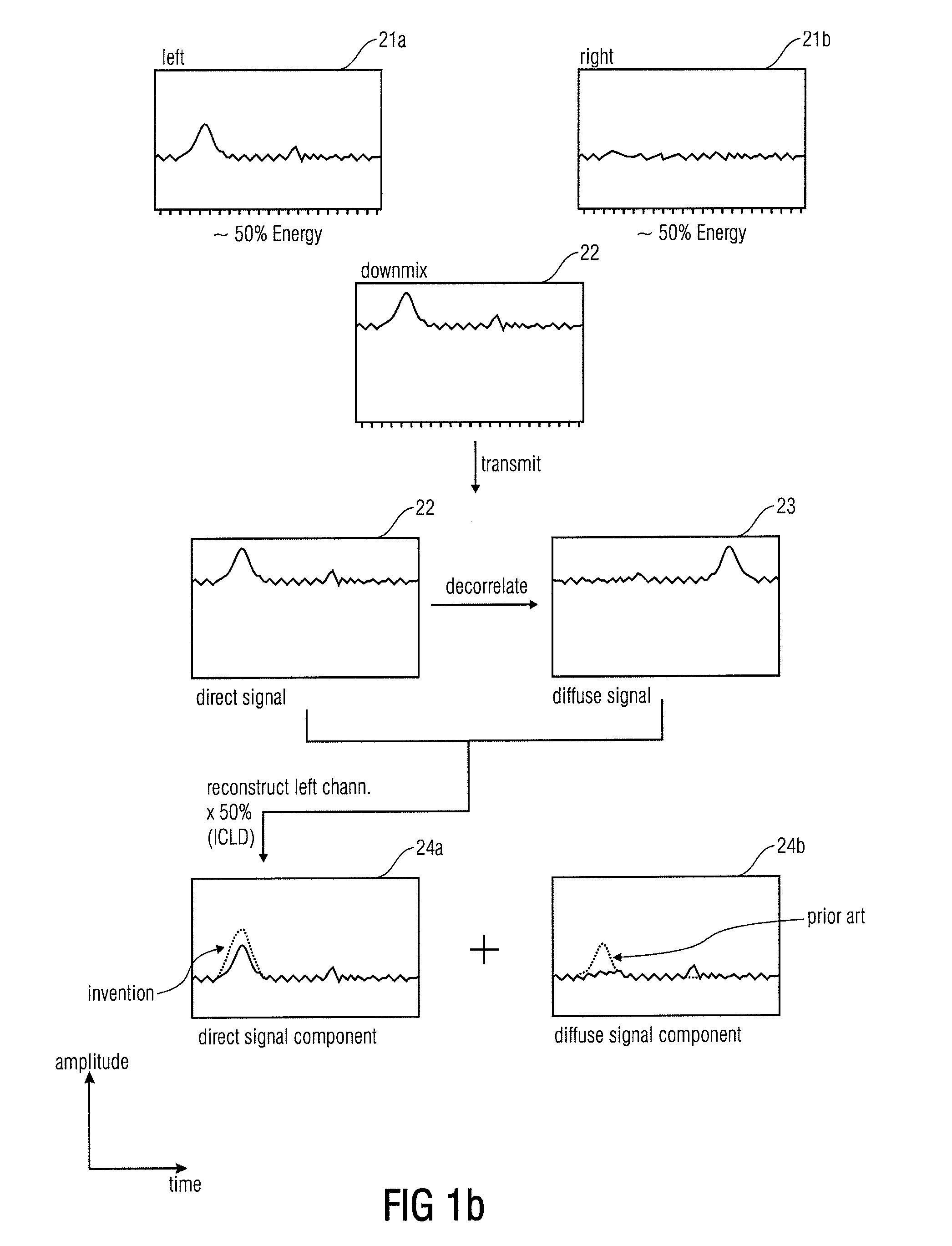Enhanced method for signal shaping in multi-channel audio reconstruction
a multi-channel audio and signal shaping technology, applied in the field of enhanced signal shaping in multi-channel audio reconstruction, can solve the problems of unsatisfactory subjective quality of synthesized applause signals, inability to improve the spatial distribution of single applause events in signals, and the possibility of introduced distortions becoming even worse, etc., to achieve the effect of enhancing signal shaping
- Summary
- Abstract
- Description
- Claims
- Application Information
AI Technical Summary
Benefits of technology
Problems solved by technology
Method used
Image
Examples
Embodiment Construction
[0059]FIG. 1 shows an example for coding of multi-channel audio data according to prior art, to more clearly illustrate the problem solved by the inventive concept.
[0060]Generally, on an encoder side, an original multi-channel signal 10 is input into the multi-channel encoder 12, deriving side information 14 indicating the spatial distribution of the various channels of the original multi-channel signals with respect to one another. Apart from the generation of side information 14, a multi-channel encoder 12 generates one or more sum signals 16, being downmixed from the original multi-channel signal. Famous configurations widely used are so-called 5-1-5 and 5-2-5 configurations. In 5-1-5 configuration the encoder generates one single monophonic sum signal 16 from five input channels and hence, a corresponding decoder 18 has to generate five reconstructed channels of a reconstructed multi-channel signal 20. In the 5-2-5 configuration, the encoder generates two downmix channels from f...
PUM
 Login to View More
Login to View More Abstract
Description
Claims
Application Information
 Login to View More
Login to View More - R&D
- Intellectual Property
- Life Sciences
- Materials
- Tech Scout
- Unparalleled Data Quality
- Higher Quality Content
- 60% Fewer Hallucinations
Browse by: Latest US Patents, China's latest patents, Technical Efficacy Thesaurus, Application Domain, Technology Topic, Popular Technical Reports.
© 2025 PatSnap. All rights reserved.Legal|Privacy policy|Modern Slavery Act Transparency Statement|Sitemap|About US| Contact US: help@patsnap.com



